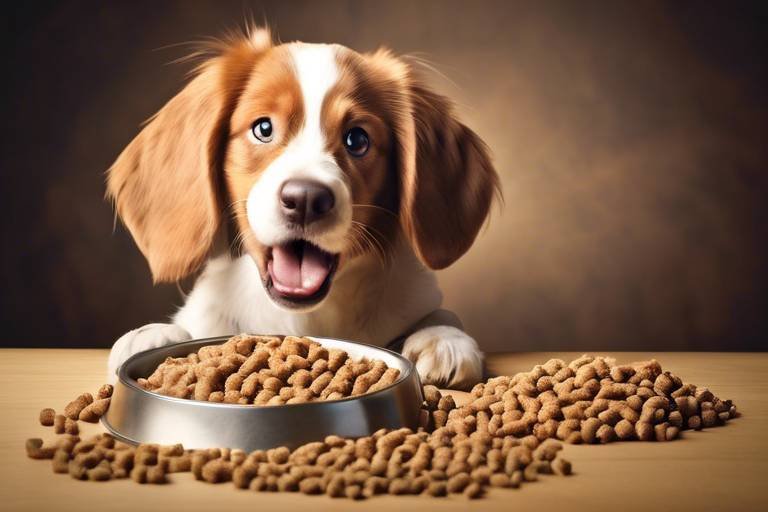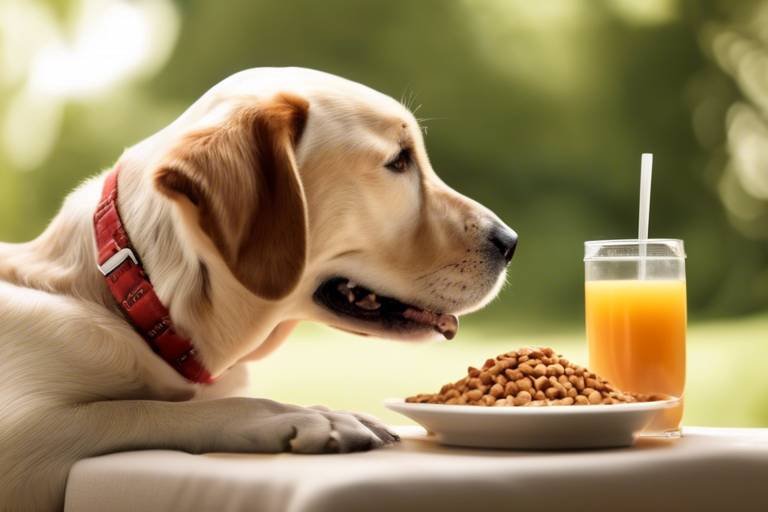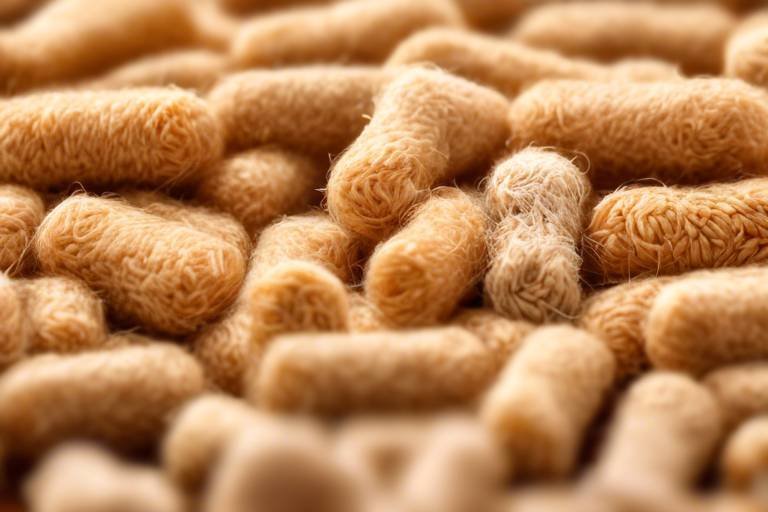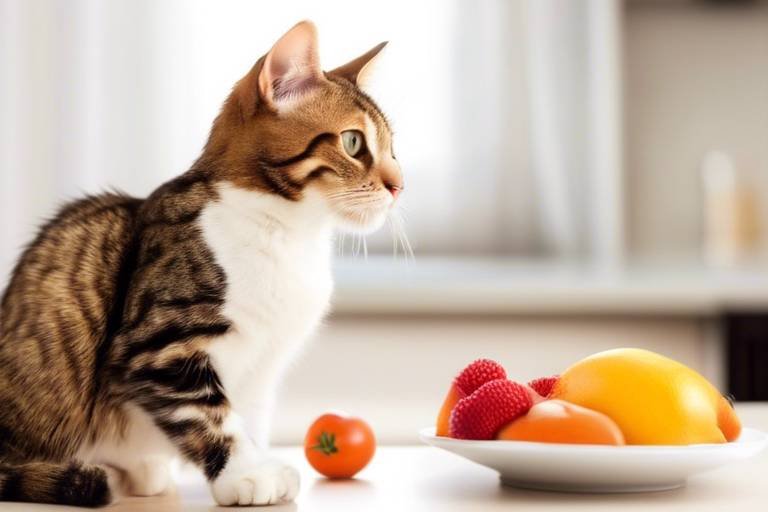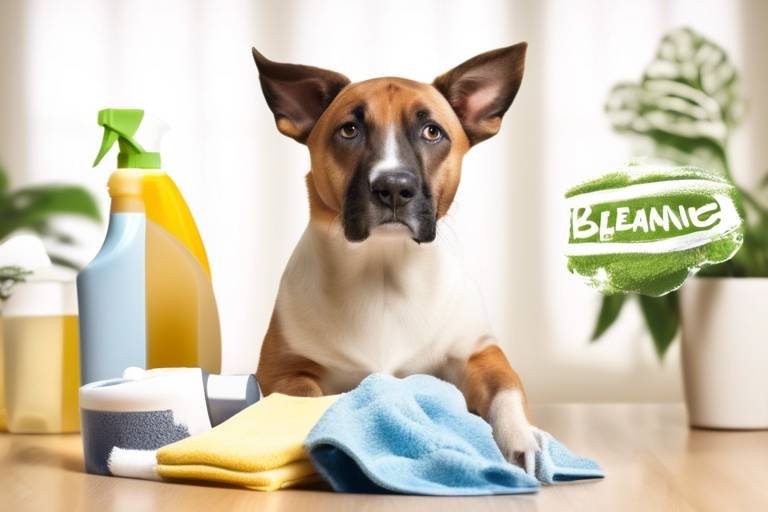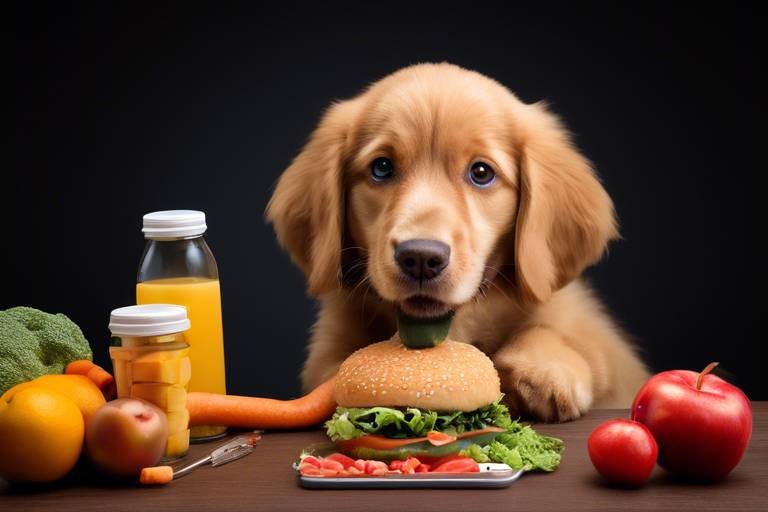How to Choose the Right Pet Food - A Comprehensive Guide
Choosing the right pet food for your furry friends is not just a matter of grabbing the first bag off the shelf. It’s a journey that requires understanding your pet's unique needs, preferences, and health considerations. Just like humans, our pets have specific nutritional requirements that vary based on their species, age, and individual health status. This guide will navigate you through the essential aspects of pet nutrition, helping you make informed decisions that will lead to a happier, healthier life for your beloved companion.
Every pet is different, and so are their nutritional needs. For instance, a growing puppy has different requirements compared to a senior dog. Cats, too, have unique dietary needs that differ from dogs. Essential nutrients such as proteins, fats, carbohydrates, vitamins, and minerals play crucial roles in maintaining your pet's overall health and well-being. For example, proteins are vital for muscle development, while fats provide energy and support healthy skin and coat. Understanding these needs is the first step in ensuring your pet receives the best possible nutrition.
Have you ever picked up a bag of pet food and felt overwhelmed by the label? You’re not alone! Learning to read pet food labels is crucial for making informed choices. The label is like a roadmap that guides you through the ingredients and nutritional content of the food. Key components to look for include:
- Ingredients List: This tells you what’s in the food, arranged in descending order by weight.
- Guaranteed Analysis: This section provides information on the minimum percentages of protein and fat, along with maximum percentages of fiber and moisture.
- Nutritional Adequacy Statement: This indicates whether the food meets the standards set by the Association of American Feed Control Officials (AAFCO).
Identifying high-quality ingredients is vital for your pet's health. Look for foods that list real meat as the first ingredient, such as chicken, beef, or fish. Whole grains, fruits, and vegetables are also excellent additions that provide essential nutrients. Ingredients like sweet potatoes and brown rice offer digestible carbohydrates, while antioxidants from fruits like blueberries can support a healthy immune system. Always remember, the fewer the ingredients, the easier it is to determine if they are beneficial for your pet.
Not all ingredients are beneficial. Common fillers like corn, soy, and wheat can detract from your pet's overall health and nutrition. These ingredients often serve as cheap fillers that provide little nutritional value. Additionally, artificial preservatives, colors, and flavors can be harmful in the long run. Always opt for brands that prioritize natural ingredients and avoid those that list these fillers as primary components.
The source of meat in pet food greatly impacts its quality. It’s essential to know where the meat comes from. For example, meats labeled as "by-products" can be less desirable and may not provide the same nutritional benefits as whole meats. Look for clear labeling that specifies the type of meat and its source. This transparency can help you ensure that your pet is getting high-quality protein that supports their health.
Some pets have specific dietary requirements due to health issues or allergies. For instance, pets with food sensitivities may require grain-free options or limited-ingredient diets. If your pet has been diagnosed with a health condition, such as diabetes or kidney disease, it’s crucial to choose food tailored to meet these unique needs. Consulting with your veterinarian can provide you with the best options available for your pet's specific situation.
When it comes to pet food, you’ll often find yourself choosing between dry and wet options. Each type has its advantages and disadvantages, and understanding these can help you decide which is best for your pet. Dry food is typically more convenient and can help maintain dental health by reducing plaque buildup. On the other hand, wet food can provide additional hydration and is often more appealing to picky eaters.
Dry food can be a fantastic option for busy pet owners. It’s easy to store, has a longer shelf life, and is often more cost-effective. Additionally, the crunchiness of kibble can help clean your pet's teeth, promoting better dental health. However, it’s essential to ensure that the dry food you choose is high-quality and meets your pet’s nutritional needs.
Wet food can be a game-changer, especially for pets that struggle to drink enough water. The higher moisture content in wet food helps keep your pet hydrated, which is particularly important for cats. Moreover, the rich aroma and taste of wet food can entice even the fussiest eaters. If your pet is prone to urinary issues, incorporating wet food into their diet can be beneficial.
Your veterinarian is your best ally when it comes to selecting the right pet food. They can provide personalized recommendations based on your pet's health, age, and lifestyle. Regular check-ups are essential for monitoring your pet’s nutritional status and ensuring their dietary needs are being met effectively. Don’t hesitate to ask your vet about specific brands or formulas that may be best suited for your furry friend.
Regular check-ups can help monitor your pet's nutritional status. Just like we need to adjust our diets as we age or face health challenges, our pets do too. During these assessments, your veterinarian can evaluate your pet’s weight, coat condition, and overall health, allowing for timely adjustments to their diet if necessary.
As pets age or their health changes, their dietary needs may also shift. Puppies and kittens require different nutrients than adult or senior pets. Being attentive to these changes and adjusting their diet accordingly is crucial for maintaining their health. For instance, senior pets may benefit from diets lower in calories but higher in fiber to support digestion.
Q: How do I know if my pet is allergic to their food?
A: Common signs of food allergies include itching, gastrointestinal upset, and ear infections. If you suspect your pet has a food allergy, consult your veterinarian for guidance on elimination diets.
Q: Can I mix wet and dry food?
A: Yes, mixing wet and dry food can offer the benefits of both types. However, be mindful of portion sizes to avoid overfeeding.
Q: What should I do if my pet refuses to eat their food?
A: If your pet refuses to eat, it may be worth trying a different brand or flavor. If the refusal persists, consult your veterinarian to rule out any underlying health issues.
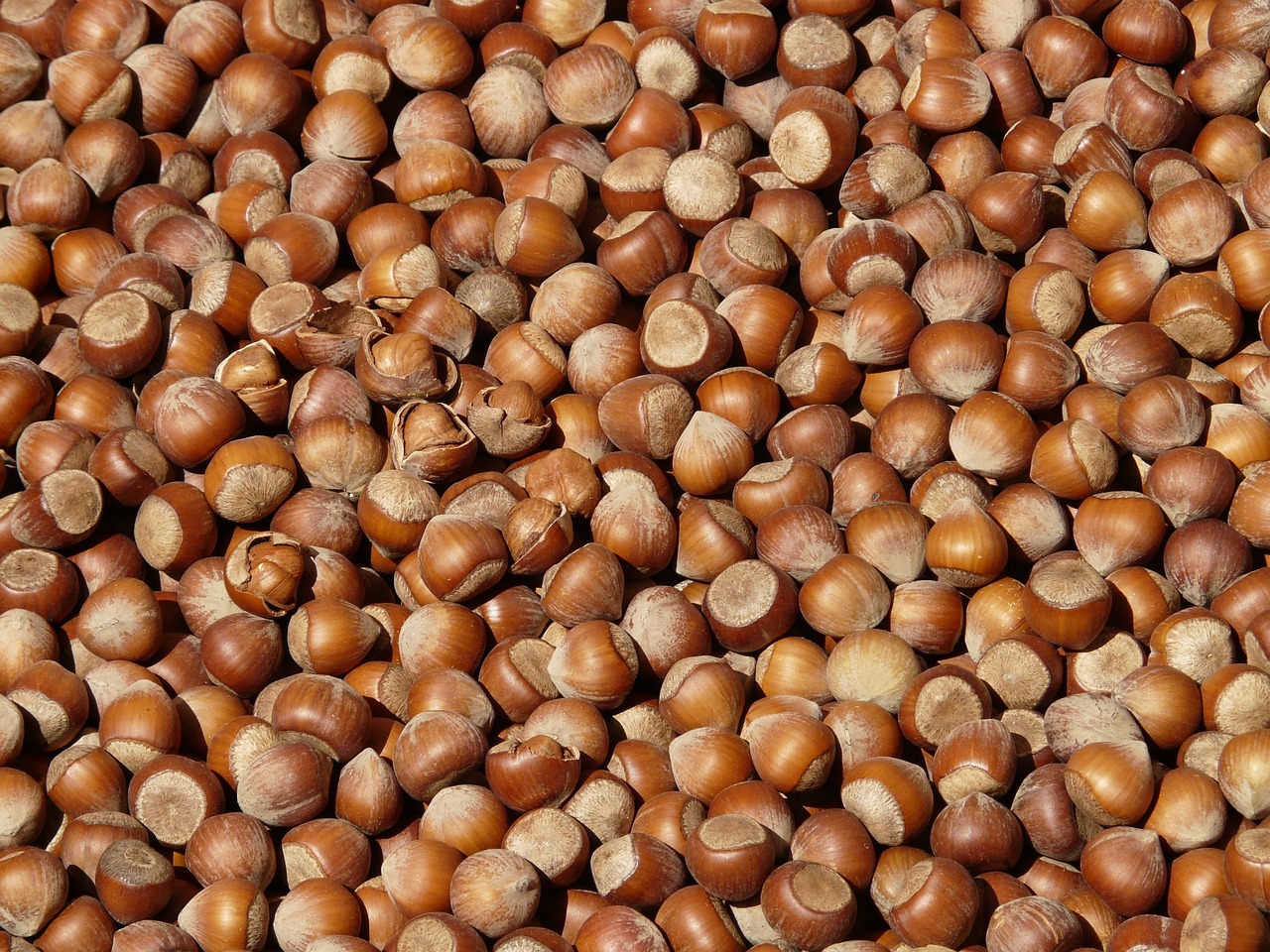
Understanding Pet Nutritional Needs
When it comes to our furry companions, understanding their nutritional needs is akin to deciphering a secret code. Just like humans, pets have unique dietary requirements that vary not only by species but also by age, activity level, and health status. For instance, a sprightly kitten has vastly different nutritional needs than a senior cat lounging in the sun. It’s essential to recognize these differences to keep our pets healthy and thriving.
At the core of your pet's diet are the essential nutrients required for optimal health. These include proteins, fats, carbohydrates, vitamins, and minerals. Each nutrient plays a specific role in your pet's well-being:
- Proteins: These are the building blocks of your pet's body, essential for growth, repair, and maintenance of tissues.
- Fats: Not only do fats provide energy, but they also support cell structure and help absorb fat-soluble vitamins.
- Carbohydrates: While not always necessary, carbohydrates can provide energy and aid digestive health.
- Vitamins and Minerals: These are crucial for various bodily functions, including immune response and bone health.
Moreover, different pets have varying needs based on their life stages. Puppies and kittens require a diet rich in calories and nutrients to support their rapid growth, while adult pets need a balanced diet to maintain their health. Senior pets, on the other hand, may benefit from diets lower in calories but higher in fiber to support digestion. Understanding these stages is crucial in selecting the right food for your pet.
Additionally, certain health conditions can necessitate specific dietary adjustments. For example, pets with kidney issues might require a diet lower in protein, whereas those suffering from obesity may need a calorie-restricted diet. Always consult with your veterinarian to tailor your pet’s diet based on their health needs.
In essence, understanding your pet's nutritional needs is not just about feeding them; it's about providing them with the right fuel for their unique lifestyle. Just like a car runs best on the right kind of fuel, your pet will thrive on a diet that meets their specific nutritional requirements. So, take the time to educate yourself on what your furry friend needs, and you'll be rewarded with a happy, healthy companion.

Reading Pet Food Labels
When it comes to choosing the right food for your beloved pet, understanding how to read pet food labels is absolutely essential. Just like you wouldn’t buy a product without checking its ingredients, the same principle applies to pet food. Pet food labels can seem overwhelming at first glance, but once you break them down, they reveal a wealth of information about what you're actually feeding your furry friend. So, let’s dive into the nitty-gritty of those labels and uncover the secrets behind them!
The first thing to look for is the ingredient list. Ingredients are usually listed in descending order by weight, meaning the first few ingredients make up the bulk of the food. Ideally, you want to see high-quality proteins, such as chicken, beef, or fish, listed at the top. If you see vague terms like "meat by-products" or "animal fat," it’s a red flag. These ingredients can come from a variety of sources and may not be the best for your pet's health.
Next up is the guaranteed analysis, which provides a breakdown of the nutrients in the food. This section typically includes percentages of protein, fat, fiber, and moisture. It’s important to note that these values are based on an as-fed basis, meaning they don’t account for the moisture content in wet foods. For example, a dry food might list 30% protein, while a wet food might list 10% protein, but the actual protein content can be quite different when you consider moisture levels. To help you understand this better, here’s a quick comparison:
| Type of Food | Protein % (Guaranteed Analysis) | Moisture % (Guaranteed Analysis) | Actual Protein Content |
|---|---|---|---|
| Dry Food | 30% | 10% | 33.3% |
| Wet Food | 10% | 78% | 45.5% |
Another critical component of the label is the nutritional adequacy statement. This statement tells you whether the food meets the nutritional levels established by the AAFCO (Association of American Feed Control Officials). Look for phrases like “complete and balanced” for the specific life stage of your pet, whether it’s for puppies, adults, or seniors. If the food doesn’t have this statement, it may not provide all the necessary nutrients your pet needs.
Lastly, don’t overlook the feeding guidelines provided on the packaging. These guidelines offer a recommended daily serving size based on your pet’s weight and age, which can be incredibly helpful in managing your pet’s diet and preventing obesity. However, keep in mind that these are just guidelines; every pet is unique, and factors like activity level and health status may require adjustments.
In summary, reading pet food labels is not just about picking the first bag you see on the shelf. It's about making informed decisions that will impact your pet's health and well-being. By understanding the ingredients, guaranteed analysis, nutritional adequacy statements, and feeding guidelines, you're taking a big step towards ensuring that your furry companion gets the nutrition they deserve.
- What should be the first ingredient in pet food? Look for high-quality protein sources such as chicken, beef, or fish.
- How can I tell if a pet food is of good quality? Check for a clear nutritional adequacy statement, high-quality ingredients, and a balanced guaranteed analysis.
- Are fillers harmful to my pet? While not all fillers are harmful, many can provide little to no nutritional value. It's best to avoid foods with excessive fillers.
- How often should I check my pet's food label? Regularly check the labels, especially if you change brands or if your pet's health needs change.
Ingredients to Look For
When it comes to choosing the right pet food, understanding the ingredients is crucial for ensuring your furry friend receives the best nutrition possible. Just like you wouldn’t settle for a meal that lacks flavor or nutrients, your pet deserves the same consideration! High-quality ingredients can make a world of difference in your pet's health and vitality. So, what should you be on the lookout for?
First and foremost, real meat should be at the top of your list. Look for specific sources like chicken, beef, or fish as the first ingredient. This indicates that the food contains a substantial amount of protein, which is essential for your pet's muscle development and overall health. Additionally, whole meats and meat meals (like chicken meal) are excellent choices because they offer concentrated protein levels.
Next, don’t forget about healthy fats. Ingredients like fish oil or chicken fat provide essential fatty acids that promote a shiny coat and healthy skin. These fats also support brain function and can help reduce inflammation. You might be surprised to learn that just like humans, pets need a balance of fats for optimal health!
Furthermore, whole grains and vegetables are also vital components. Ingredients such as brown rice, oats, and sweet potatoes are excellent sources of carbohydrates that provide energy and fiber. Fiber is particularly important for digestive health. In addition, vegetables like peas and carrots offer vitamins and minerals that contribute to your pet's overall well-being.
To illustrate the importance of these ingredients, here’s a simple table outlining some beneficial ingredients and their benefits:
| Ingredient | Benefits |
|---|---|
| Real Meat (e.g., Chicken, Beef) | High in protein for muscle development |
| Fish Oil | Supports skin health and reduces inflammation |
| Brown Rice | Provides energy and aids digestion |
| Sweet Potatoes | Rich in vitamins and fiber |
Moreover, it’s essential to be aware of probiotics and prebiotics in your pet's food. These ingredients promote a healthy gut microbiome, which is crucial for digestion and immune function. Look for terms like "live probiotics" or "prebiotic fiber" on the label, as they indicate the presence of these beneficial components.
In summary, when selecting pet food, be vigilant about the ingredients. Opt for products that prioritize real meat, healthy fats, whole grains, and vegetables. By doing so, you're not just feeding your pet; you're nurturing them with the nutrition they need to thrive. Remember, a well-fed pet is a happy pet!
- What should be the first ingredient in pet food? The first ingredient should ideally be a specific meat source, like chicken or beef, indicating high protein content.
- Are fillers bad for my pet? Yes, fillers can dilute the nutritional value of pet food and may lead to health issues over time.
- How can I tell if a pet food is high quality? Look for recognizable ingredients, a clear nutritional analysis, and avoid foods with vague terms like "meat by-products."
- Should I choose grain-free pet food? It depends on your pet's specific needs. Some pets benefit from grain-free diets, while others thrive on whole grains.
Common Fillers and Additives
When it comes to pet food, not all ingredients are created equal. It’s essential to be vigilant about what goes into your furry friend’s bowl. Fillers and additives are often used in pet food to bulk up the product and reduce costs, but they can have negative impacts on your pet’s health. These ingredients may not provide any nutritional value and can even lead to long-term health issues.
Common fillers include ingredients like corn, wheat, and soy. While these may seem harmless, they often serve as cheap sources of energy rather than nutritious components that support your pet’s well-being. Pets, especially dogs and cats, are primarily carnivores and thrive on protein-rich diets. Therefore, a food high in these fillers can lead to poor health outcomes.
In addition to fillers, many pet foods contain artificial additives, such as preservatives, colorings, and flavor enhancers. These substances might make the food more appealing to pet owners, but they can pose risks to your pet's health. For instance, certain artificial preservatives like BHA and BHT have been linked to health concerns in animals. It’s crucial to read labels carefully and understand what these additives can mean for your pet.
To help you identify common fillers and additives, here’s a quick reference table:
| Filler/Additive | Potential Issues |
|---|---|
| Corn | May cause allergies and is a poor protein source. |
| Wheat | Can lead to digestive issues and allergies. |
| Soy | Often linked to allergies and is not a complete protein. |
| BHA/BHT | Potential carcinogens that can harm your pet’s health. |
| Artificial Colors | May cause hyperactivity and allergic reactions. |
Understanding these fillers and additives is vital for making informed decisions about your pet's diet. Always opt for high-quality pet foods that prioritize real, wholesome ingredients over cheap fillers. Remember, what you feed your pet can significantly impact their health, happiness, and overall quality of life.
1. What are fillers in pet food?
Fillers are low-quality ingredients used to bulk up pet food and reduce production costs, often lacking nutritional value.
2. Why should I avoid artificial additives?
Artificial additives can pose health risks to your pets, including allergies and potential long-term health issues.
3. How can I tell if a pet food is high-quality?
Look for foods that list real meat as the first ingredient and avoid those with fillers and artificial additives.
4. Are all grains bad for pets?
Not necessarily. Some pets can digest grains well, but many do better on grain-free diets. Always consult your veterinarian for personalized advice.
Understanding Meat Sources
When it comes to choosing the right pet food, one of the most significant factors to consider is the source of the meat. Just like humans, pets require high-quality protein to thrive, and the type of meat included in their diet can greatly affect their overall health. Think of meat as the cornerstone of your pet's nutrition; it provides essential amino acids that support muscle development, energy levels, and overall vitality.
First off, it's crucial to understand that not all meat sources are created equal. The quality of the meat can vary significantly based on its origin. For instance, meat labeled as "human-grade" typically comes from animals that are fit for human consumption, which means it meets higher standards of quality and safety. In contrast, lower-quality meat sources might come from by-products or animals that were not processed under the same stringent regulations. This can lead to a diet that is less nutritious and potentially harmful to your pet.
When examining pet food labels, you'll often see terms like "chicken meal," "beef by-product," or "lamb." Here's a quick breakdown of what these terms generally mean:
| Term | Explanation |
|---|---|
| Chicken Meal | Concentrated source of protein made from rendered chicken, often higher in protein than fresh chicken. |
| Beef By-Product | Includes parts of the animal that are not muscle meat, such as organs and bones, which can vary in quality. |
| Lamb | Refers to the meat from young sheep; it can be a good source of protein but check for quality indicators. |
Another key aspect to consider is whether the meat is sourced from animals raised in humane conditions. Ethical sourcing not only impacts the quality of the meat but also reflects your values as a pet owner. Look for brands that prioritize animal welfare and sustainable farming practices. This not only benefits your pet but also contributes to a more ethical food system.
Additionally, keep an eye out for specific meat sources that are known for their health benefits. For example, fish is an excellent source of omega-3 fatty acids, which can promote a shiny coat and healthy skin. Similarly, organ meats like liver are packed with vitamins and minerals that can enhance your pet's diet. However, moderation is key; too much of certain meats can lead to imbalances in nutrients.
In summary, understanding meat sources is about more than just picking the first bag of pet food you see. It's about being an informed pet parent who cares about the quality of the food you're providing. By paying attention to the origin, quality, and ethical considerations of the meat in your pet's diet, you can ensure that they receive the best nutrition possible. After all, a healthy pet is a happy pet!
- What should I look for in the meat source of pet food? Look for high-quality, human-grade meat, and avoid by-products whenever possible.
- Is fish a good protein source for pets? Yes, fish is an excellent source of protein and omega-3 fatty acids, which are beneficial for skin and coat health.
- How can I tell if a pet food brand is ethical? Research the brand's sourcing practices, animal welfare policies, and certifications they may have.
- Can I feed my pet raw meat? Consult with your veterinarian before feeding raw meat, as it may pose risks for certain pets.
Special Dietary Needs
When it comes to our furry companions, not all pets are created equal. Just like humans, pets can have unique dietary needs that must be addressed to ensure their health and happiness. Whether your pet has specific health issues, allergies, or sensitivities, understanding these special requirements is crucial. For instance, some pets may need to avoid certain ingredients due to allergies, while others may require a diet that supports specific health conditions like obesity, diabetes, or kidney disease.
First and foremost, it’s essential to recognize the signs that your pet may have special dietary needs. Look out for symptoms such as excessive scratching, gastrointestinal upset, or sudden weight changes. If you notice any of these issues, a visit to the veterinarian is a must. Your vet can recommend tailored diets that cater specifically to your pet’s condition.
Here are some common dietary needs that you might encounter:
- Food Allergies: Some pets may be allergic to common ingredients like chicken, beef, or grains. In such cases, a limited ingredient diet can be beneficial.
- Weight Management: Overweight pets may require a special diet that is lower in calories but still provides essential nutrients.
- Digestive Issues: Pets with sensitive stomachs may benefit from easily digestible foods that are gentle on their digestive systems.
- Age-Related Needs: Senior pets often require diets that support joint health and cognitive function.
Choosing the right food can feel overwhelming, especially with so many options available. It’s important to read labels carefully and consult with your veterinarian to find the best match for your pet’s needs. Remember, what works for one pet may not work for another, so personalized recommendations are key.
Additionally, consider the transition process when changing your pet’s diet. Gradually introducing new food over a week or so can help avoid gastrointestinal upset. Mix a small amount of the new food with the old food, gradually increasing the new food while decreasing the old. This slow transition helps your pet adjust better to the new diet.
In summary, understanding and addressing your pet's special dietary needs is an essential part of responsible pet ownership. With the right knowledge and guidance, you can help your furry friend thrive and enjoy a healthy, happy life.
Q: How do I know if my pet has special dietary needs?
A: Look for signs such as allergies, weight changes, or digestive issues. Consulting with a veterinarian is the best way to determine your pet's specific dietary requirements.
Q: Can I make homemade food for my pet with special dietary needs?
A: Yes, but it’s crucial to ensure that the homemade diet meets all of your pet's nutritional needs. Consulting with a veterinarian or a pet nutritionist can help you formulate a balanced diet.
Q: Are there specific brands recommended for pets with special dietary needs?
A: There are many brands that offer specialized diets. It's best to consult your veterinarian for recommendations tailored to your pet's specific needs.
Q: How long does it take for a dietary change to affect my pet?
A: It can vary depending on the condition being addressed, but you should typically see improvements within a few weeks. Regular monitoring and follow-up with your vet are important during this time.
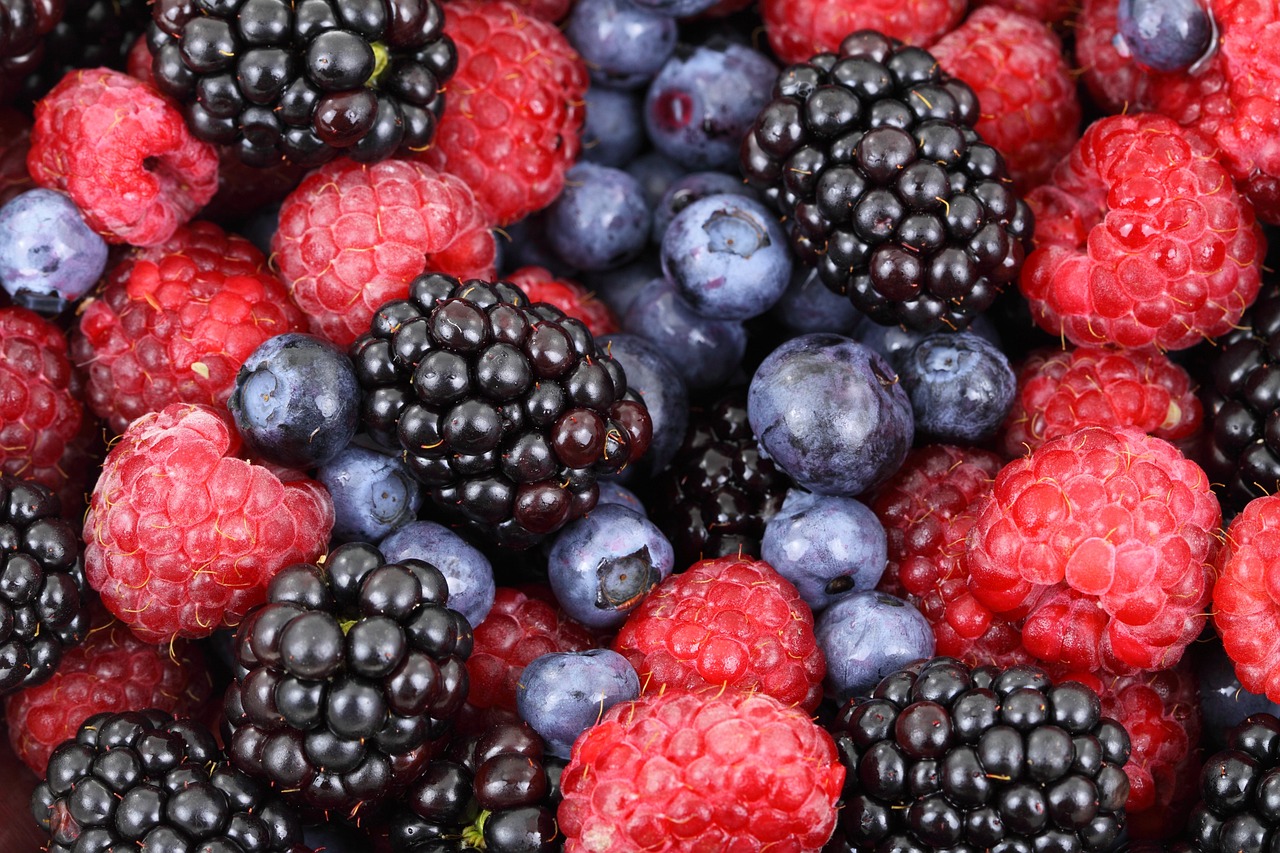
Choosing Between Dry and Wet Food
When it comes to choosing the right food for your furry friend, the decision between dry and wet food can feel like navigating a maze. Both options have their merits, and understanding the differences can help you make an informed choice that suits your pet's needs. Dry food, often referred to as kibble, is typically more convenient. It has a longer shelf life and can be left out for your pet to munch on throughout the day. This can be particularly advantageous for pet owners with busy schedules who may not have the time to prepare fresh meals daily.
On the other hand, wet food, which comes in cans or pouches, is often more palatable for pets, especially for those who are picky eaters or have dental issues. The high moisture content in wet food can also aid in keeping your pet hydrated, which is crucial for their overall health. However, it’s worth noting that wet food can spoil faster once opened, requiring careful storage and timely consumption.
To give you a clearer picture, let’s break down the advantages and disadvantages of each type:
| Type of Food | Advantages | Disadvantages |
|---|---|---|
| Dry Food |
|
|
| Wet Food |
|
|
Ultimately, the choice between dry and wet food should be influenced by your pet’s individual preferences, health needs, and lifestyle. Some pet owners find that a combination of both works best, providing the benefits of each type. For instance, you might offer dry food during the day and wet food as a special treat in the evening. This not only keeps mealtime exciting but also ensures your pet receives a balanced diet.
As you weigh your options, consider your pet's age, health status, and any specific dietary requirements they may have. If your pet has a history of urinary issues, for example, incorporating wet food can help increase their water intake. Conversely, if your pet has dental problems, dry food might be more beneficial for their oral health.
In conclusion, there’s no one-size-fits-all answer when it comes to choosing between dry and wet food. The best approach is to experiment with both types while keeping a close eye on your pet’s reaction and overall health. Remember, your veterinarian can also provide valuable insights tailored to your pet’s unique needs.
Benefits of Dry Food
When it comes to choosing the right pet food, many pet owners often find themselves torn between dry and wet options. However, dry food, or kibble, has a variety of benefits that make it a popular choice among pet lovers. One of the most significant advantages of dry food is its convenience. Unlike wet food, which typically requires refrigeration and can spoil quickly, dry food can be stored easily and has a longer shelf life. This means less waste and more flexibility for pet owners who may not have time to prepare fresh meals daily.
Another key benefit of dry food is its impact on dental health. The crunchy texture of kibble can help reduce plaque and tartar buildup on your pet's teeth, promoting better oral hygiene. Just think of it as a workout for your pet's mouth! Chewing on dry food can be akin to brushing their teeth, helping to keep their gums healthy and their breath fresher.
Moreover, dry food often contains a balanced blend of essential nutrients that are crucial for your pet's health. Many brands formulate their kibble with the right proportions of proteins, fats, carbohydrates, vitamins, and minerals, ensuring your furry friend gets a complete diet. When selecting dry food, look for options that list high-quality protein sources as the first ingredient, such as chicken, beef, or fish. This not only ensures your pet gets the protein they need but also enhances the overall taste and appeal of the food.
In addition to these benefits, dry food can also be a cost-effective choice for many pet owners. Generally, dry food is more affordable than wet food, allowing you to feed your pet a high-quality diet without breaking the bank. Plus, it’s easier to measure portions with dry kibble, making it less likely that you'll overfeed your pet, which can lead to obesity—a growing concern among pets today.
For those who have busy lifestyles, dry food can be a lifesaver. It can be left out throughout the day, allowing your pet to graze as they please. This can be especially beneficial for pets that are picky eaters or for those who prefer to eat smaller meals more frequently. However, it's essential to monitor your pet's intake to ensure they're not consuming too much, as that can lead to weight gain.
In summary, dry food offers numerous advantages, including convenience, dental health benefits, balanced nutrition, cost-effectiveness, and ease of feeding. As you consider your pet's dietary needs, incorporating dry food into their diet could be a fantastic option that supports their health and well-being.
Benefits of Wet Food
When it comes to choosing the right food for your furry friend, wet food often stands out as a popular choice among pet owners. But what makes it so appealing? First and foremost, wet food is typically more palatable than dry food. Many pets, especially those that are picky eaters, find the aroma and texture of wet food irresistible. Imagine trying to entice a toddler with a plate of bland vegetables; sometimes, a little flavor goes a long way! Likewise, wet food can be a game-changer for pets that are recovering from illness or have dental issues, as the softness makes it easier for them to chew and swallow.
Another significant benefit of wet food is its moisture content. Pets, especially cats, can be prone to urinary tract issues and kidney problems, primarily due to dehydration. Wet food can help increase their water intake, promoting better hydration and overall kidney health. In fact, a diet that includes a higher moisture content can make a world of difference in your pet's health. Think of it as adding a splash of water to a dry sponge; it simply makes everything more effective!
Moreover, wet food often contains higher protein levels compared to dry food. This is particularly beneficial for active pets or those that require a high-protein diet for health reasons. When selecting wet food, look for options that list real meat as the primary ingredient. This ensures your pet is getting the quality nutrition they deserve. Additionally, wet food is often rich in essential vitamins and minerals, which can contribute to a shiny coat, healthy skin, and robust immune system.
However, it's important to note that wet food can be more expensive than dry food, and it may not be as convenient for storage or feeding. To balance the benefits, many pet owners choose to incorporate both wet and dry food into their pet's diet, allowing them to enjoy the advantages of each. For example, you might consider using wet food as a tasty topper on dry kibble, making mealtime an exciting event for your pet!
In summary, wet food can offer numerous benefits, including:
- Enhanced Palatability: Irresistible taste for picky eaters.
- Increased Hydration: Helps prevent urinary and kidney issues.
- Higher Protein Content: Supports active lifestyles and nutritional needs.
- Soft Texture: Easier for pets with dental issues to eat.
Ultimately, the choice between wet and dry food depends on your pet's individual needs, preferences, and any specific health considerations. By understanding the benefits of wet food, you can make a more informed decision that keeps your beloved companion happy and healthy!
1. Can I mix wet and dry food for my pet?
Yes, many pet owners choose to mix wet and dry food to provide a balanced diet that offers the benefits of both. Just be sure to monitor your pet's overall calorie intake to avoid overfeeding.
2. How often should I feed my pet wet food?
Feeding frequency can vary based on your pet's age, size, and activity level. Generally, it's best to follow the feeding guidelines on the food packaging and consult with your veterinarian for personalized advice.
3. Is wet food suitable for all pets?
While wet food can be beneficial for many pets, some may have specific dietary restrictions or health issues that require a different type of diet. Always consult your veterinarian before making significant changes to your pet's diet.
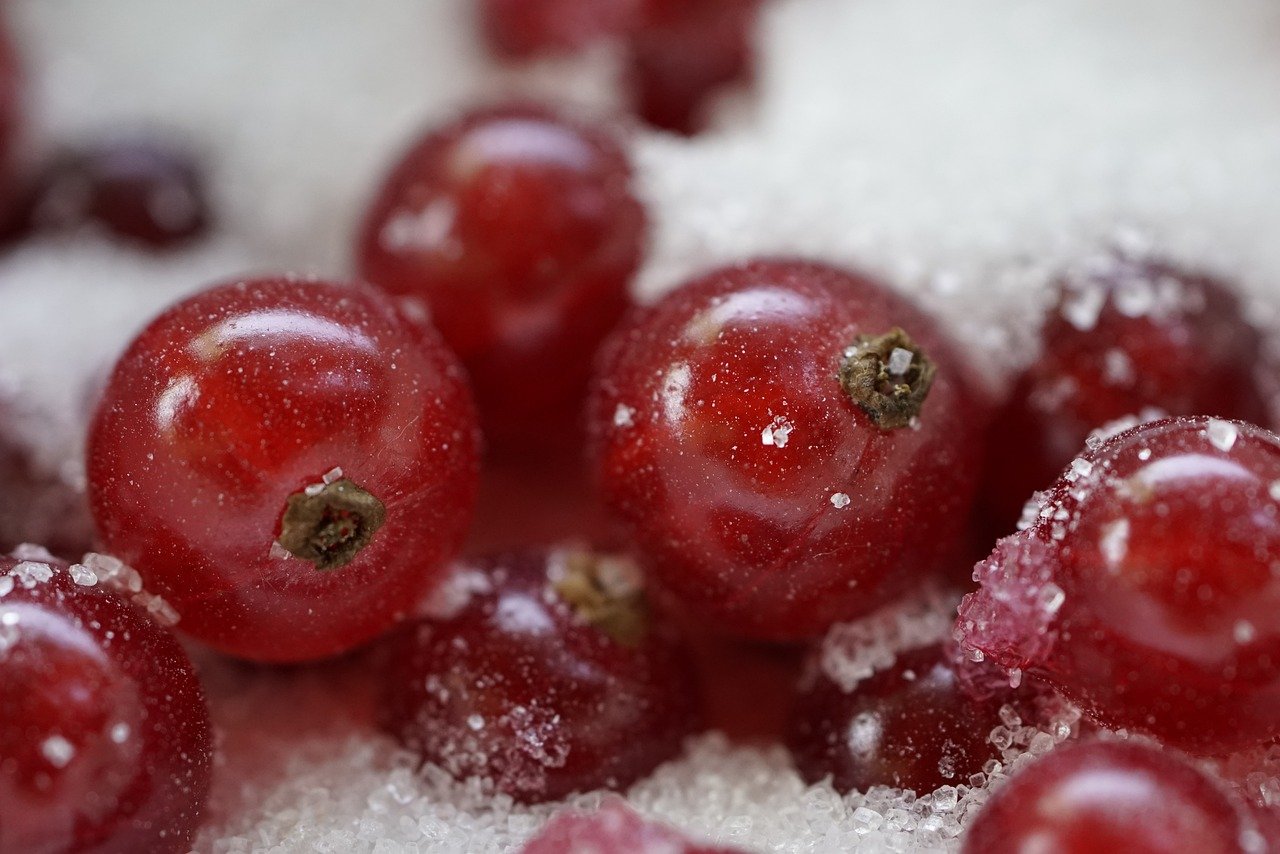
Consulting with Your Veterinarian
When it comes to your pet's health, there's no substitute for expert advice. is an essential step in choosing the right pet food. Just like you wouldn’t pick a diet plan without consulting a nutritionist, your furry friend deserves the same level of care. Your vet can provide personalized recommendations based on your pet’s unique health profile, lifestyle, and specific dietary needs. This tailored approach ensures that your pet receives the best nutrition possible, which is crucial for their overall well-being.
During your visit, be sure to discuss any health issues your pet may have. Conditions like obesity, allergies, or digestive problems can significantly influence the type of food that’s best for them. For instance, if your pet struggles with allergies, your vet might recommend a limited-ingredient diet or hypoallergenic food. By sharing this information, you can work together to create a comprehensive feeding plan that supports your pet's health.
Moreover, regular consultations with your veterinarian can lead to ongoing nutritional assessments. These assessments help monitor your pet's weight, energy levels, and overall health, allowing you to make necessary adjustments to their diet as they age or their health changes. For example, a young, active dog may require a different nutritional profile than an older dog with joint issues. By staying proactive, you can avoid potential health problems down the line.
As your pet grows, their dietary needs will evolve. This is another reason why maintaining a good relationship with your veterinarian is vital. They can guide you on when to switch from puppy or kitten food to adult formulas and eventually to senior diets. The transition can be tricky, but with your vet’s guidance, you can ensure that your pet is receiving the right nutrients at every life stage.
In conclusion, consulting with your veterinarian is not just a good idea—it's a necessity. Their expert recommendations can help you navigate the often overwhelming world of pet food choices. So, the next time you’re tempted to make a switch in your pet’s diet, remember: your veterinarian is your best ally.
- How often should I consult my veterinarian about my pet's diet?
It's recommended to have regular check-ups at least once a year, but more frequent visits may be necessary for pets with specific health issues. - Can I change my pet's food without consulting my vet?
While you can make minor changes, it's best to consult your vet before making significant dietary changes to avoid digestive issues. - What should I do if my pet is picky about food?
Your veterinarian can suggest strategies or specific brands that may appeal to your pet’s taste buds.
Regular Nutritional Assessments
Regular nutritional assessments are an essential part of ensuring your pet's health and well-being. Just like humans, pets can experience changes in their nutritional needs as they age or if their health status shifts. These assessments allow you to keep a close eye on your furry friend's dietary requirements and make necessary adjustments to their food. It's not just about filling their bowl; it's about providing the right fuel for their unique bodies.
During a nutritional assessment, your veterinarian will evaluate several factors, including your pet's weight, activity level, and any underlying health conditions. This process is crucial because what worked for your pet last year may not be suitable today. For instance, a once-active puppy may become less energetic as they age, leading to different dietary needs.
Moreover, pets can develop allergies or sensitivities over time. Regular check-ups can help identify these issues early on. If your pet suddenly starts scratching or has digestive problems, it might be time to reconsider their diet. Your vet can recommend specialized foods that cater to these new requirements, ensuring your pet remains happy and healthy.
To give you an idea of how often you should schedule these assessments, here’s a simple guideline:
| Age of Pet | Recommended Check-Up Frequency |
|---|---|
| Puppies and Kittens | Every 3-4 months |
| Adult Pets (1-7 years) | Every 6-12 months |
| Senior Pets (7+ years) | Every 3-6 months |
By adhering to these recommendations, you can ensure that your pet receives the right nutrition at every stage of their life. Remember, the goal of regular nutritional assessments is to keep your pet thriving, not just surviving. Your vet can help tailor a diet that supports their energy levels, maintains a healthy weight, and keeps their coat shiny and vibrant.
In conclusion, don’t underestimate the power of regular nutritional assessments. They are your pet’s ticket to a longer, healthier life. After all, a well-nourished pet is a happy pet, and nothing beats the joy of seeing your furry friend full of life and vitality!
- How often should I take my pet for nutritional assessments? It varies by age and health, but generally every 6-12 months for adults and more frequently for seniors or pets with health issues.
- Can I make dietary changes without consulting my vet? It's not advisable. Always consult your veterinarian before making any significant changes to your pet's diet.
- What signs indicate my pet may need a dietary change? Look for changes in weight, energy levels, coat condition, or any new allergies or sensitivities.
Adjusting Diet Over Time
As our beloved pets journey through life, their dietary needs evolve just like we do. Imagine your pet as a fine wine; it requires careful aging and attention to truly flourish. When pets are young, they often need a diet rich in protein and calories to support their growth and energy levels. However, as they age, their metabolism slows down, and their nutritional needs shift. This means that what worked for them as a sprightly puppy or kitten may not be suitable as they transition into adulthood or senior years.
For instance, a young dog might thrive on a high-energy kibble, but as they mature, they might benefit from a diet lower in calories but higher in fiber to maintain a healthy weight. Similarly, older pets may face health challenges such as arthritis, kidney disease, or dental issues, which can necessitate changes in their food. It’s like tailoring a suit – what fits perfectly today may not be the best choice tomorrow.
To help you navigate these changes, here are some key factors to consider when adjusting your pet's diet:
- Age: Puppies and kittens require different nutrients compared to adult and senior pets. Always choose age-appropriate food.
- Health Conditions: If your pet develops health issues, consult your veterinarian for a specialized diet that addresses those needs.
- Activity Level: An active pet may need more calories than a couch potato. Monitor their activity and adjust accordingly.
- Weight Management: If your pet is overweight, consider a weight management formula to help them shed those extra pounds safely.
It's essential to introduce any dietary changes gradually. Sudden shifts can upset your pet's digestive system, leading to discomfort or even illness. A good rule of thumb is to transition over a week, mixing increasing amounts of the new food with the old. This slow introduction acts like a warm-up before a big race, allowing your pet's body to adjust smoothly without any hiccups.
Regular consultations with your veterinarian are invaluable during this process. They can provide insights tailored specifically to your pet's health and lifestyle, ensuring that their diet is not just adequate but optimal. Think of your vet as your pet’s personal nutritionist, ready to guide you through the maze of pet food choices.
In conclusion, adjusting your pet's diet over time is not just about changing the brand or flavor; it's about understanding their unique needs as they grow and change. By staying observant and proactive, you can ensure that your furry friend enjoys a long, healthy, and happy life.
- How often should I change my pet's food? It's best to review their diet every six months or whenever you notice changes in their health or activity level.
- What signs indicate my pet needs a diet change? Look for changes in weight, energy levels, coat condition, or if your pet seems uninterested in their food.
- Can I mix wet and dry food? Yes, many pet owners find that mixing both can provide the benefits of each while appealing to their pet's taste preferences.
Frequently Asked Questions
- What should I look for when choosing pet food?
When selecting pet food, focus on high-quality ingredients, a balanced nutritional profile, and specific dietary needs of your pet. Look for real meat as the first ingredient, and avoid fillers and artificial additives. Always check the guaranteed analysis to ensure it meets your pet's nutritional requirements.
- How do I read pet food labels effectively?
Reading pet food labels can be tricky but essential. Start by checking the ingredients list, which is ordered by weight. Look for named meat sources, whole grains, and vegetables. The guaranteed analysis provides information on the minimum and maximum percentages of nutrients, helping you understand the food's composition.
- Are there specific dietary needs I should be aware of for my pet?
Yes! Some pets may have allergies, sensitivities, or health conditions that require special diets. For example, dogs with grain allergies might need grain-free food, while older pets may benefit from diets lower in calories and higher in fiber. Consulting with your veterinarian is key to tailoring your pet's diet.
- What are the benefits of dry food versus wet food?
Dry food is convenient, helps with dental health, and is often more affordable. On the other hand, wet food can offer hydration and may be more appealing to picky eaters. The best choice depends on your pet's preferences, health, and lifestyle.
- How often should I consult my veterinarian about my pet's diet?
It's a good idea to consult your veterinarian at least once a year for a nutritional assessment. If your pet has health changes or you notice weight fluctuations, schedule an appointment sooner. Regular check-ups help ensure your pet's dietary needs are being met effectively.
- Can I change my pet's diet suddenly?
It's best to transition your pet to a new diet gradually over 7-10 days. Sudden changes can upset their digestive system. Start by mixing a small amount of the new food with their current food and gradually increase the new food while decreasing the old food.

